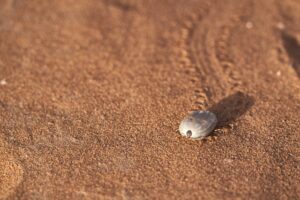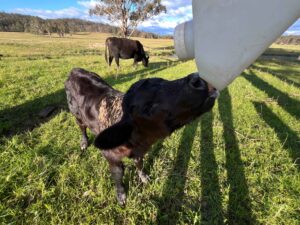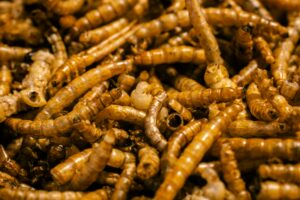Growing & Raising Your Own Food for Self-Sustainable Farming
What is Self-Sustainable Living?
Self-sustainable living is the practice of growing food and raising animals in a way that reduces dependence on external resources. It focuses on creating a balanced ecosystem where plants, animals, and the environment support each other. In Australia, this means working with the climate, soil, and natural resources to produce food efficiently while minimizing waste and maximizing long-term viability. By adopting sustainable practices, individuals can ensure long-term food security while reducing environmental impact.
Plants
Growing your own food in Australia is an essential step toward self-sufficiency. Whether you’re cultivating vegetables, fruit trees, or herbs, understanding soil conditions, seasonal planting, and water management is key to success. From backyard gardens to larger homesteads, growing plants provides fresh, nutrient-rich food and can significantly reduce grocery costs.A successful self-sufficient garden starts with soil health. Testing soil pH and nutrient levels helps determine what amendments are needed to optimize plant growth. Composting organic waste enriches soil fertility and supports a thriving microbial ecosystem. Mulching is another key practice, helping to retain moisture, suppress weeds, and regulate soil temperature.Australia’s diverse climate zones require strategic crop planning. Warm-season crops like tomatoes, cucumbers, and capsicums thrive in summer, while cool-season crops such as carrots, kale, and broccoli grow best in winter. Companion planting—pairing plants that benefit each other—can enhance yields, deter pests, and improve overall plant health.
Poultry
Raising poultry, such as chickens, ducks, and quails, is a practical way to ensure a steady supply of eggs and meat. Poultry are relatively low-maintenance, provide natural pest control, and contribute to soil fertility. Selecting the right breeds, setting up coops, and understanding feeding requirements are essential for successful poultry farming.Free-range poultry farming is a preferred approach for many self-sufficient farmers. It allows birds to forage naturally, reducing reliance on commercial feed while promoting a healthier diet for the animals. Chickens, for example, consume insects, seeds, and kitchen scraps, contributing to waste reduction.A well-structured coop is vital for poultry health and egg production. Coops should be predator-proof, well-ventilated, and spacious enough to allow free movement. Providing nesting boxes with clean bedding encourages consistent egg-laying. Access to fresh water, grit, and calcium supplements supports strong eggshell development.
Livestock
Livestock farming allows for a more diverse and resilient self-sustaining food system. Sheep, goats, cattle, and pigs can provide meat, milk, wool, and even natural land management benefits. Successful livestock raising requires knowledge of pasture management, fencing, and ethical care practices to ensure healthy animals and productive farming.Goats and sheep are excellent choices for small-scale self-sufficient farms. Goats provide milk, which can be used for drinking, cheese, and yogurt production. Sheep contribute wool, meat, and land maintenance by grazing on weeds and grass. Cattle, while requiring more space and resources, offer a high yield of milk and beef.Rotational grazing is a crucial practice for maintaining pasture health. By moving livestock between grazing areas, overgrazing is prevented, and soil fertility is maintained. Water access, shade, and secure fencing are essential considerations for livestock well-being. Ethical husbandry practices, such as disease prevention, proper nutrition, and humane slaughter methods, ensure sustainable and responsible animal farming.
Marine and Seafood
Marine and freshwater farming can be an excellent way to diversify a self-sufficient food supply. Fish, yabbies, and shellfish can be raised in ponds, dams, or aquaponics systems, providing a sustainable protein source. Managing water quality, feed, and breeding practices is essential for a thriving aquatic farm.Aquaponics, a system that combines fish farming with hydroponic plant growth, is gaining popularity in Australia. Fish waste provides essential nutrients for plants, while the plants naturally filter the water, creating a closed-loop system with minimal waste. Common aquaponics species include barramundi, silver perch, and trout, each suited to different temperature conditions.For those with access to larger water bodies, stocking farm dams with fish like Murray cod or golden perch can provide a renewable food source. Yabby farming is another practical option, requiring minimal input while yielding a high-protein food source.
Embracing Self-Sufficiency
Building a self-sufficient lifestyle takes time and knowledge, but with the right strategies in place, it’s a rewarding and sustainable way to live. The benefits extend beyond food security—self-sustainable farming fosters a deeper connection with nature, promotes environmental conservation, and enhances overall well-being. Whether starting small with a vegetable patch or expanding to livestock and aquaponics, self-sufficiency is a journey worth taking.
The Latest on Keeping & Growing on the Grainshed Blog
- Best Cattle Tick Treatment and Fly Control Products for Cattle and Sheep (2026 Guide)

- How to Choose the Right Livestock Shed for Your Herd

- How to Buy Cattle: A Complete Guide for Small Australian Farms

- What to Do When a Cow Won’t Accept Its Calf

- Insect Farming: A Complete Guide for Small-Scale and Sustainable Producers

